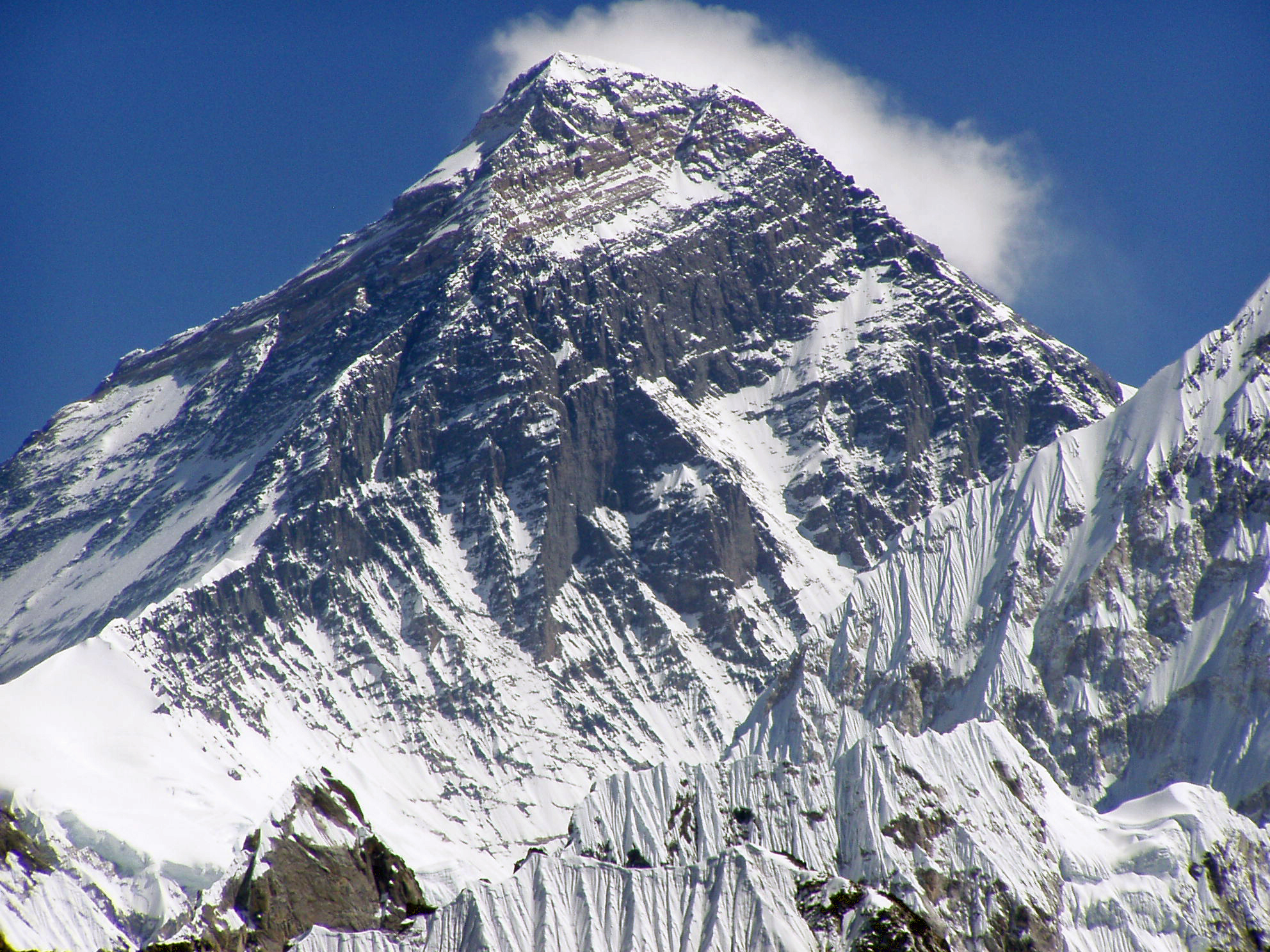Mount Everest is the world's tallest mountain, with a peak at 8,848 metres (29,029 ft) above sea level. It is located in the Mahalangur section of the Himalayas on the Nepal side of Nepal-China (Tibet) border. Its massif includes neighboring peaks Lhotse (8516m), Nuptse (7855m) and Changtse (7580m).
In 1856, the Great Trigonometric Survey of British India established the first published height of Everest, then known as Peak XV, at 29,002 ft (8,840 m). In 1865, Everest was given its official English name by the Royal Geographical Society upon a recommendation by Andrew Waugh, the British Surveyor General of India. Waugh named the mountain after his predecessor in the post, Sir George Everest. Although Tibetans had called Everest "Chomolungma" for centuries, Waugh was unaware of this because Nepal and Tibet were closed to foreigners.
The highest mountain in the world attracts many well-experienced mountaineers as well as novice climbers willing to hire professional guides. While not posing substantial technical climbing challenges on the standard route (other eight-thousanders such as K2 or Nanga Parbat are much more difficult), Everest presents dangers such as altitude sickness, weather and wind.
By the end of the 2008 climbing season, there had been 4,102 ascents to the summit by about 2,700 individuals. Climbers are a significant source of tourist revenue for Nepal, whose government also requires all prospective climbers to obtain an expensive permit, costing up to US$25,000 per person. By the end of 2009 Everest had claimed 216 lives, including eight who perished during a 1996 storm high on the mountain. Conditions are so difficult in the death zone—altitudes higher than 8,000 metres (26,000 ft)—that most corpses have been left where they fell. Some of them are visible from standard climbing routes.




No comments:
Post a Comment